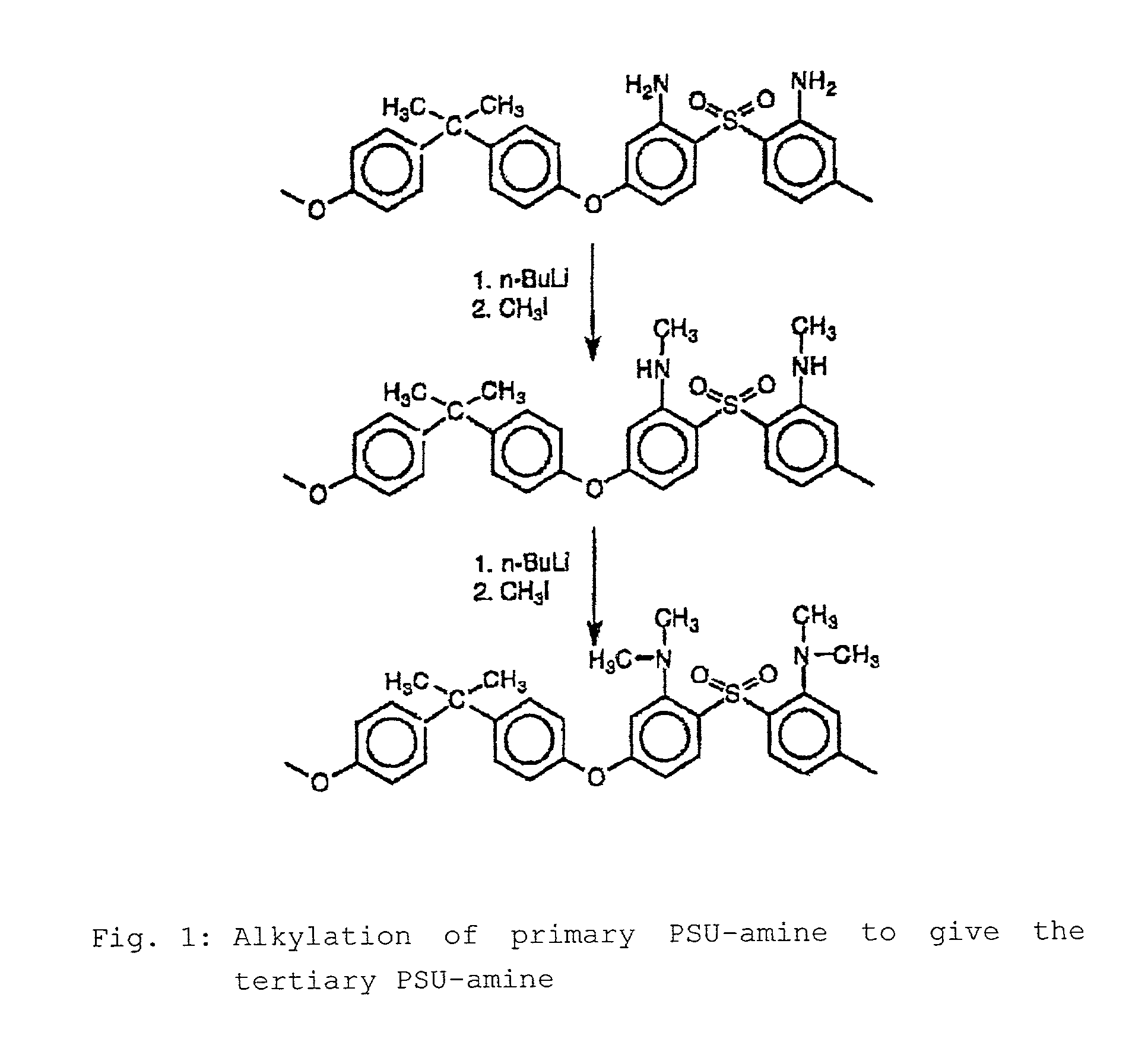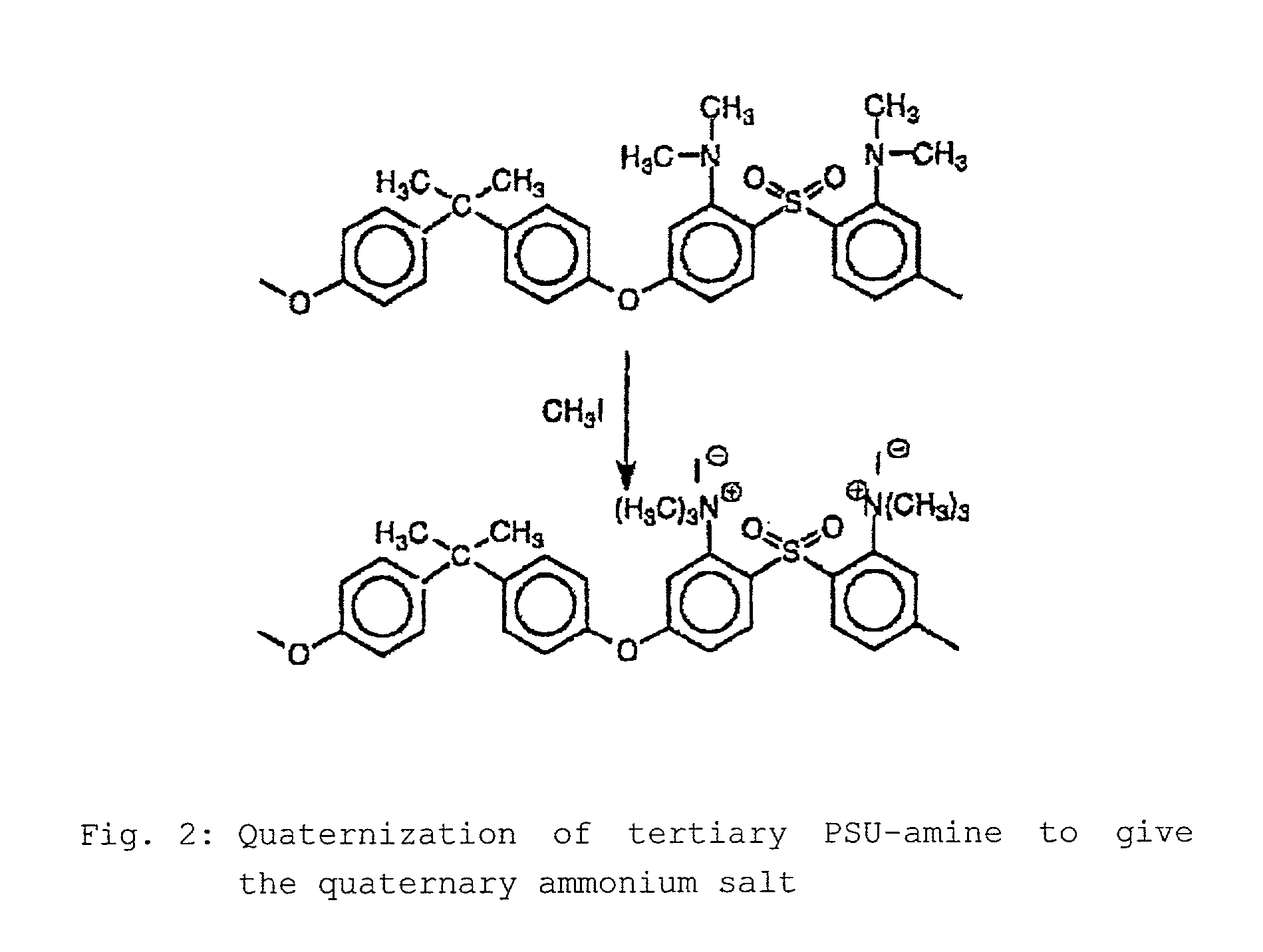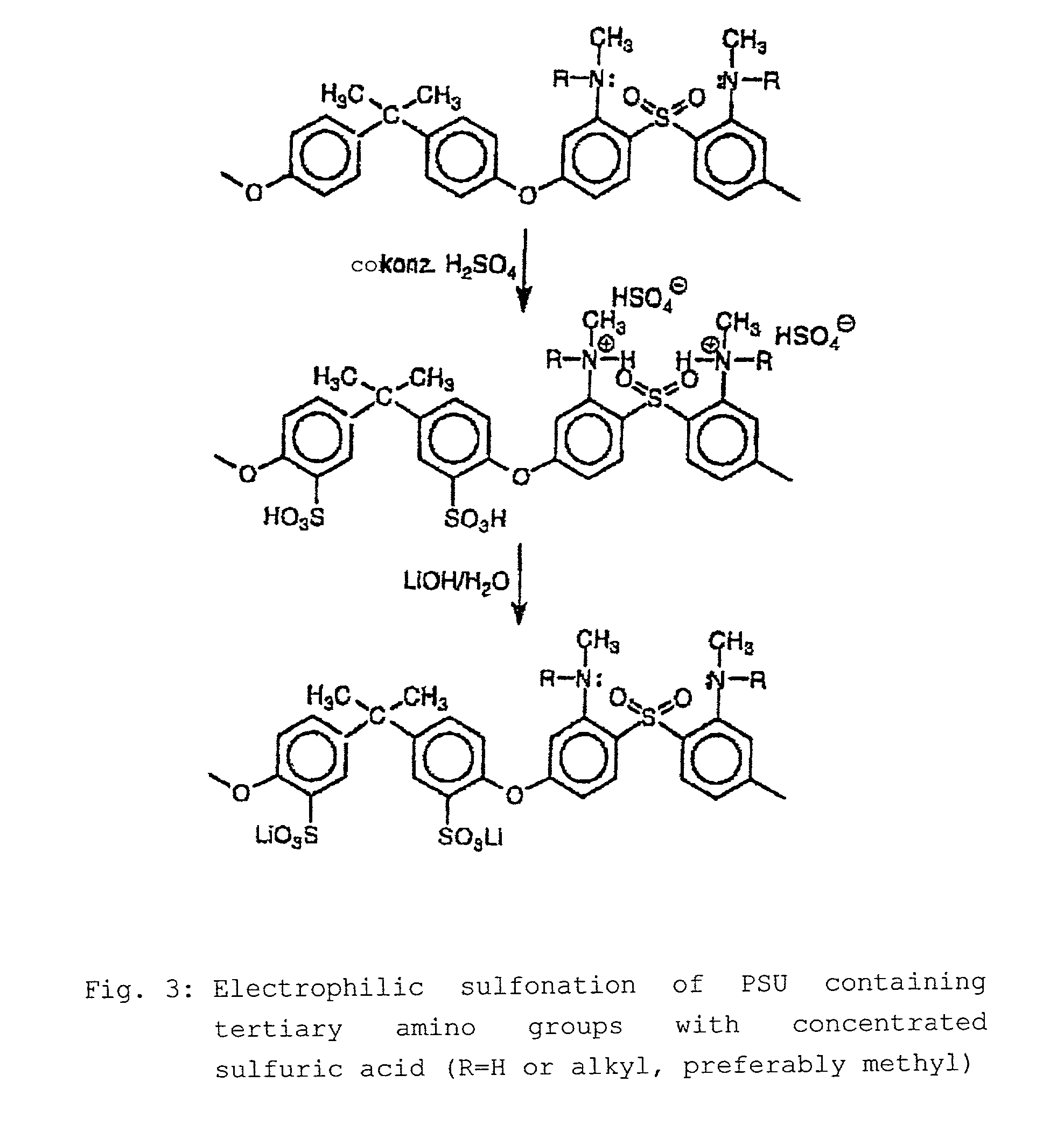Step-by-step alkylation of polymeric amines
a polymeric amine and alkylation technology, applied in the field of step-by-step alkylation of primary polymeric amines, can solve the problem of not being able to obtain secondary or tertiary polymeric amines from primary polymeric amines in a targeted manner
- Summary
- Abstract
- Description
- Claims
- Application Information
AI Technical Summary
Problems solved by technology
Method used
Image
Examples
examples 1 – 2
Examples 1–2
Reaction of Diaminated PSU(NH2)2 with n-butyllithium and Subsequently with Methyl Iodide to Give the Secondary PSU-amine PSU(NHCH3)2
Mixture:
[0058]9.44 g of diaminated PSU (0.02 mol)[0059]500 ml of anhydrous THF[0060]4 ml of 10 M n-BuLi (0.04 mol)[0061]7.6 ml of iodomethane (0.12 mol)[0062]37 ml (0.5 mol) of triethylamine
Experimental Set-up:[0063]1 L glass reaction flask, mechanical stirrer, condenser, argon inlet, mercury bubbler valve
Experimental Procedure:
[0064]The diaminated PSU is dissolved in THF under argon. It is then cooled to −70° C. The solution is titrated with 2.5 M n-BuLi until the deep red color of the PSU—NH−Li+ ion arises. The 10 M n-BuLi solution is then injected into the polymer solution. The solution is stirred for 30 minutes. The methyl iodide is then injected into the solution. The solution decolorizes. The solution is allowed to warm to room temperature, and the triethylamine is injected in in order to destroy excess methyl iodide. The mixture is h...
example 3
Acid-base Blend Membrane of the Reaction Products from 6.1 and 6.2 with Sulfonated PStJ in the SO3Li Form
[0068]4.5 g of sulfonated PSU Udel® in the SO3Li form (IEC=1.6 meq of SO3Li / g of polymer) are dissolved in 25 g of N-methylpyrrolidineone. 0.5 g of the reaction product from the reactions 6.1 / 6.2 (2 groups per PSU repeat unit) is then added to the solution and stirred until dissolved. The [lacuna] is then filtered, degassed and applied in a thin film to a glass plate. The solvent is then evaporated at 12000. The glass plate is then placed into a bath with demineralized water, and the polymer membrane formed detaches from the glass plate. The membrane is then after-treated at 7000 firstly in 10% strength sulfuric acid and then in demineralized water. The membrane is then characterized (see below).
Characterization Results:
[0069]Table 2 shows the characterization results of prepared PSU—NR2 / PSU—SO3H membranes.
[0070]
TABLE 2Content ofMembraneType ofPSU-SO3LiIECmeasuredSwellingRspH+[No...
example 4
Ionically Crosslinked Acid-Base Blend Membrane of the Reaction Product 6.2 and from Sulfonated Polysulfone in the SO3H Form
[0071]2.7 g of sulfonated PSU Udel® in the SO3H form (IEC=1.67 meq of SO3H / g of polymer) are dissolved in 15 ml of n-methylpyrrolidineone (NMP). 0.63 ml of triethylamine is then added to the solution in order to neutralize the sulfonic acid groups of the sulfonated PSU. 0.3 g of the reaction product from the reaction 6.2 (PSU(N(CH3)j2 is then added to the solution. The mixture is stirred until the reaction product has dissolved. A film is then drawn from the polymer solution on a glass plate, and then the solvent is evaporated at temperatures of 70–90–120° C. in a drying cabinet at a pressure below atmospheric pressure of, ultimately, 50 mbar. After the solvent has evaporated, the glass plate with the polymer film is left to cool and then placed into a waterbath so that the polymer film detaches from the glass plate. The membrane is then after-treated for 24 h a...
PUM
 Login to View More
Login to View More Abstract
Description
Claims
Application Information
 Login to View More
Login to View More - R&D
- Intellectual Property
- Life Sciences
- Materials
- Tech Scout
- Unparalleled Data Quality
- Higher Quality Content
- 60% Fewer Hallucinations
Browse by: Latest US Patents, China's latest patents, Technical Efficacy Thesaurus, Application Domain, Technology Topic, Popular Technical Reports.
© 2025 PatSnap. All rights reserved.Legal|Privacy policy|Modern Slavery Act Transparency Statement|Sitemap|About US| Contact US: help@patsnap.com



